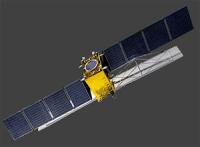Gaofen-3 was launched into orbit on August 10, 2016 from Taiyuan Satellite Launch Center in China. It was developed by the China Center for Resources Satellite Data and Application (CRESDA). Gaofen-3 orbits at 755 km above the earth's surface and is fitted with a Synthetic Aperture Radar (SAR) sensor that makes use of microwaves in the electromagnetic C-band. The spatial resolution of its imagery ranges between 1 and 500 meters. The data collected by Gaofen-3 helps monitor climatological disasters (droughts) and hydrological disasters (landslides and floods).
